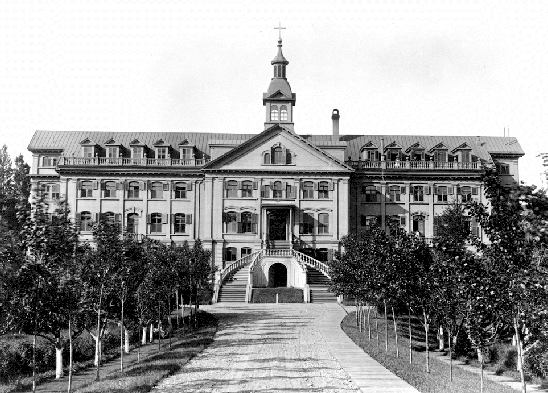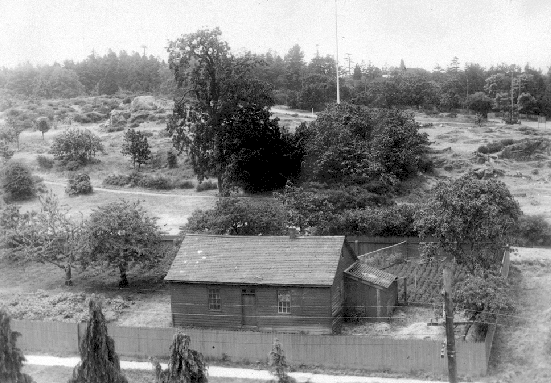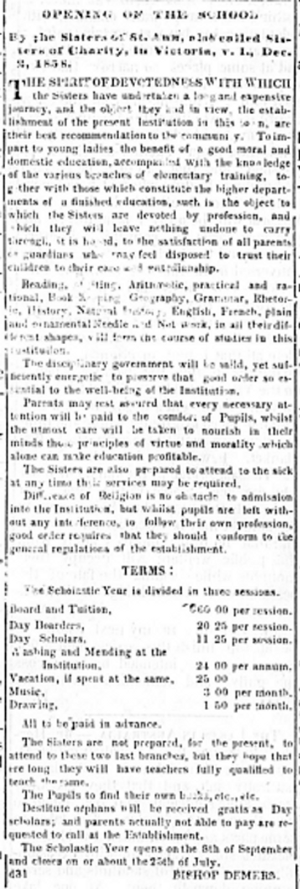Secular use of Sacred Space
It is difficult today with our huge civic buildings, sports stadiums and multi-acre commercial malls to consider that for much of the nineteenth century religious buildings were usually the largest public building in any given town. Religious buildings were usually the only place the greater portion of pioneers could meet and enjoy a break from their labours and the isolation of the farm. We would be ill advised to ignore the secular use of sacred spaces.1Vicki Bennett, Sacred Space and Structural Style: The Embodiment of Socio-Religious Ideology (Ottawa: University of Ottawa Press, 1997), pg. 258.
Religious buildings were habitually used for secular purposes. In the case of St. Ann’s, it was by 1886
St. Ann's 1886, a convent, a chapel and a school. Although the school was of Roman Catholic denomination, an advertisement for the school stated “difference of religion is no obstacle to admission.”2Bishop Demers, "Opening of the School," British Colonist, Jan. 8, 1859, pg. 3. There was little question over the duality of purpose for religious buildings. Instead, greater emphasis was placed on the buildings themselves as a sign that Victoria, as a settlement, would succeed.3Vicki Bennett, Sacred Space and Structural Style: The Embodiment of Socio-Religious Ideology (Ottawa: University of Ottawa Press, 1997), pg. 258. This attitude was prevalent even though the 1859 schoolhouse was little more than a shack
St. Ann's 1864. The presence of religious buildings signalled to colonists that the religious community was committed to their homestead, and it was seen as a sign of inevitable prosperity. Inseparable to a sense of prosperity was the effect religious buildings had on the notion of permanence, this was equally important for the secular as well as the sacred community.
Footnotes
1Vicki Bennett, Sacred Space and Structural Style: The Embodiment of Socio-Religious Ideology (Ottawa: University of Ottawa Press, 1997), pg. 258.
2Bishop Demers, "Opening of the School," British Colonist, Jan. 8, 1859, pg. 3.
3Vicki Bennett, Sacred Space and Structural Style: The Embodiment of Socio-Religious Ideology (Ottawa: University of Ottawa Press, 1997), pg. 258.
Photos: On Hover
Maynard, VICTORIA, ST. ANN'S ACADEMY, CATHOLIC CONVENT, 1900, BC Archives, F-09982.http://www.bcarchives.gov.bc.ca
Undetermined, GROUNDS OF ST. ANN'S CONVENT, HEYWOOD AVENUE, VICTORIA, 1864, BC Archives, C-05380.http://www.bcarchives.gov.bc.ca
